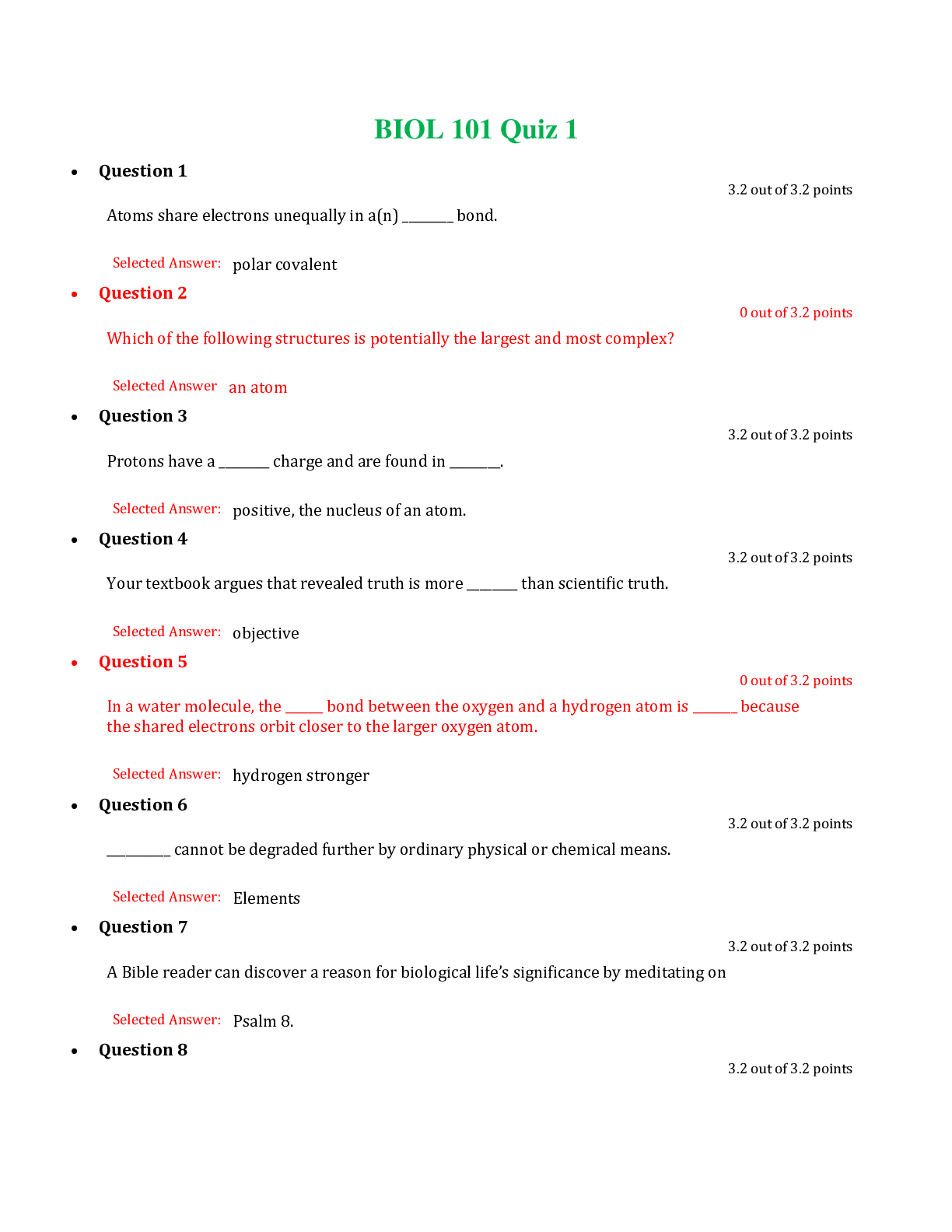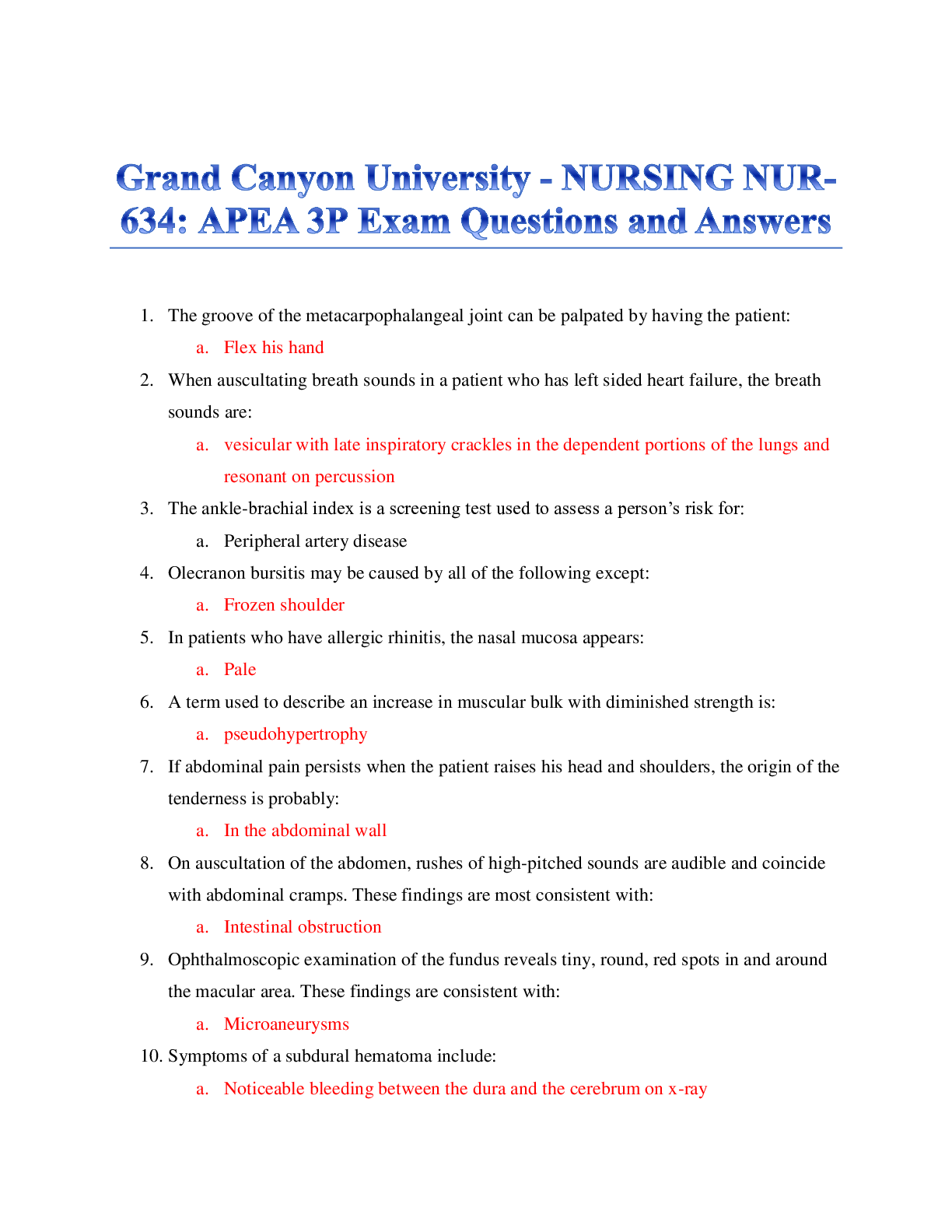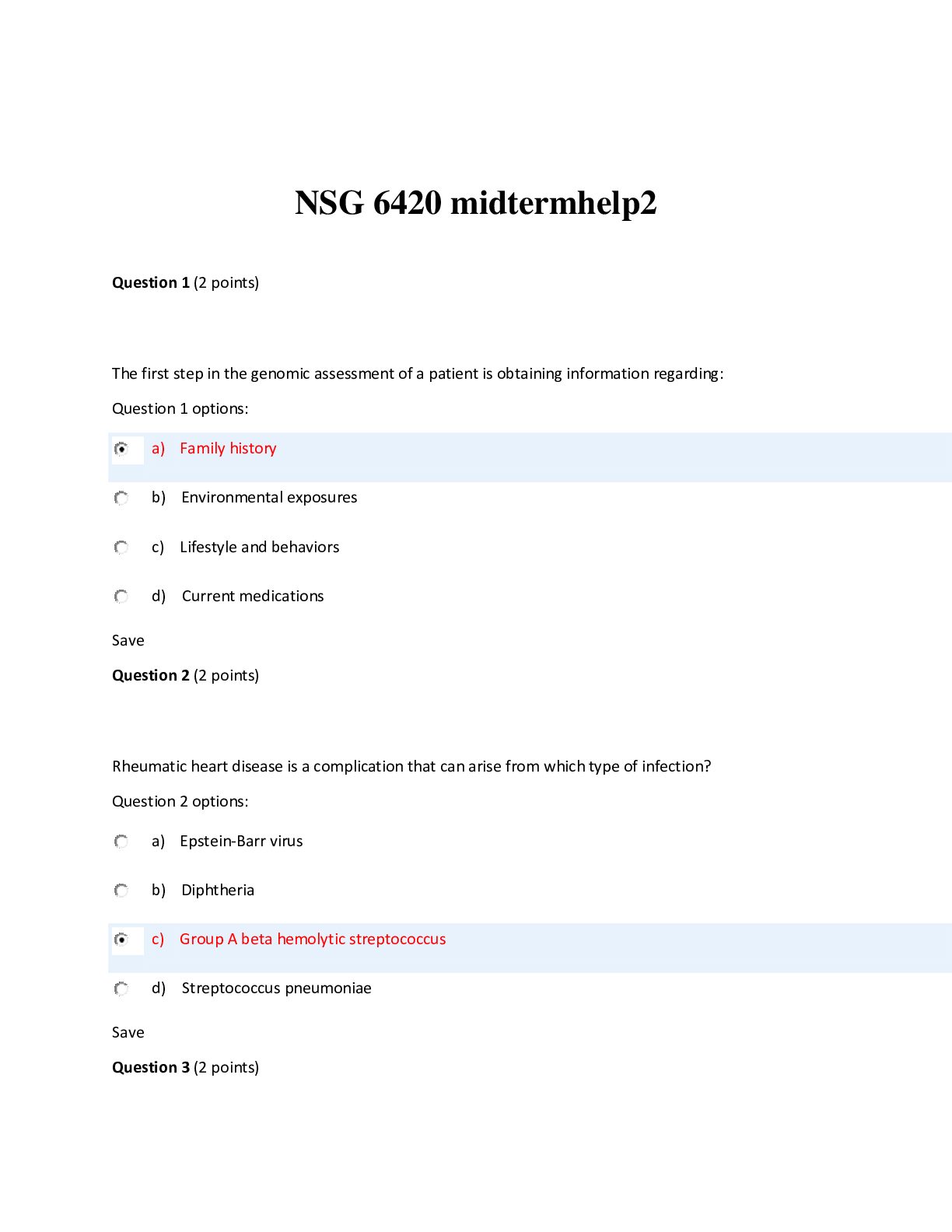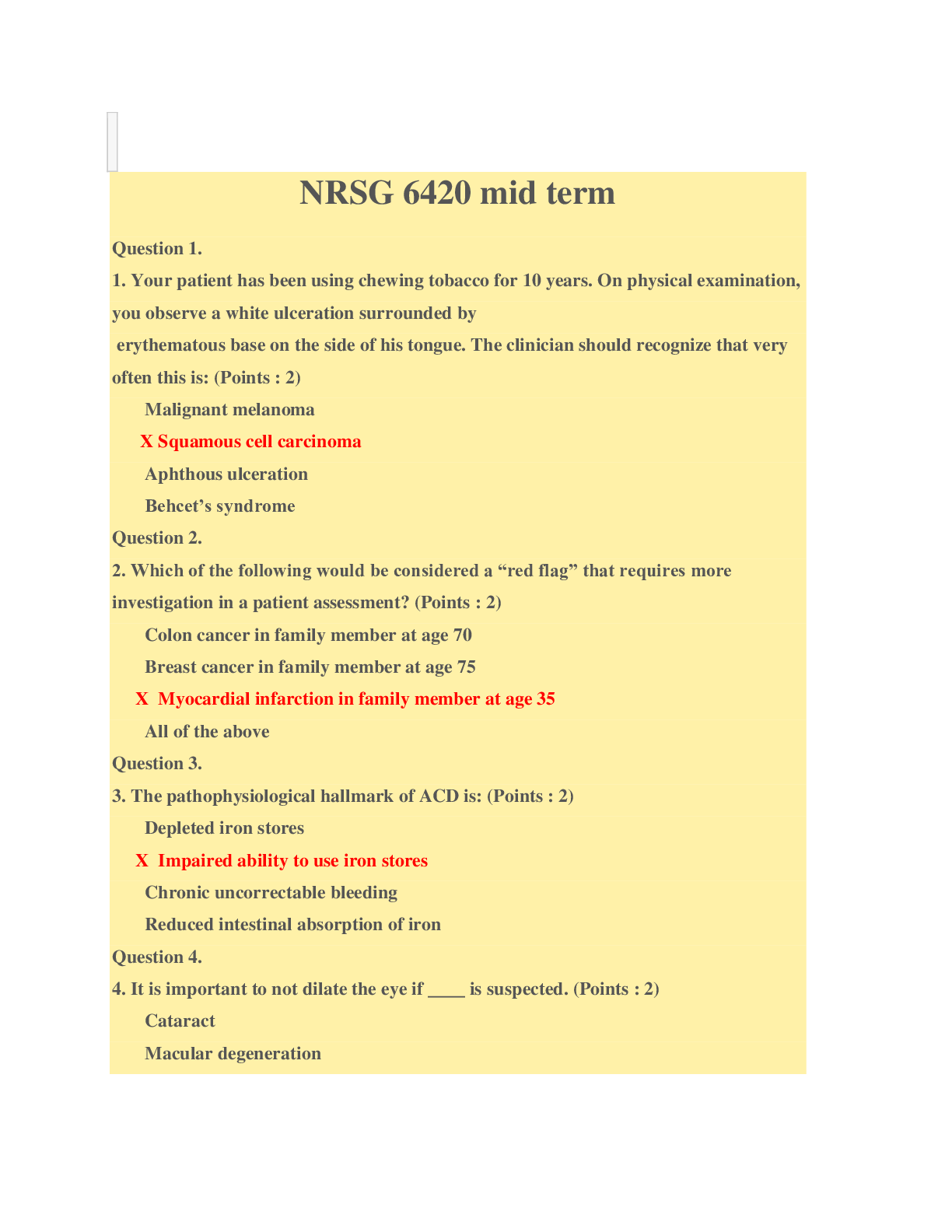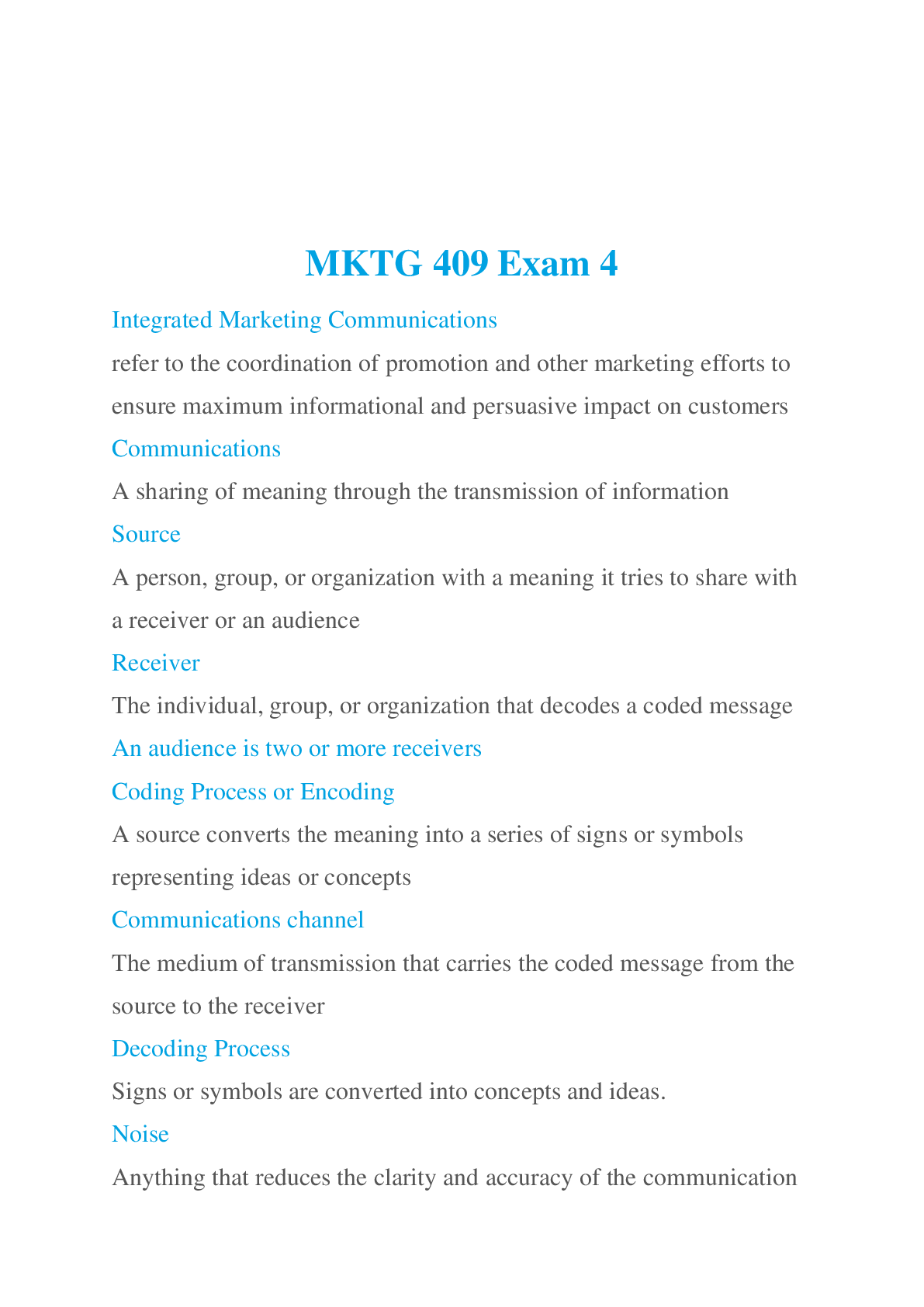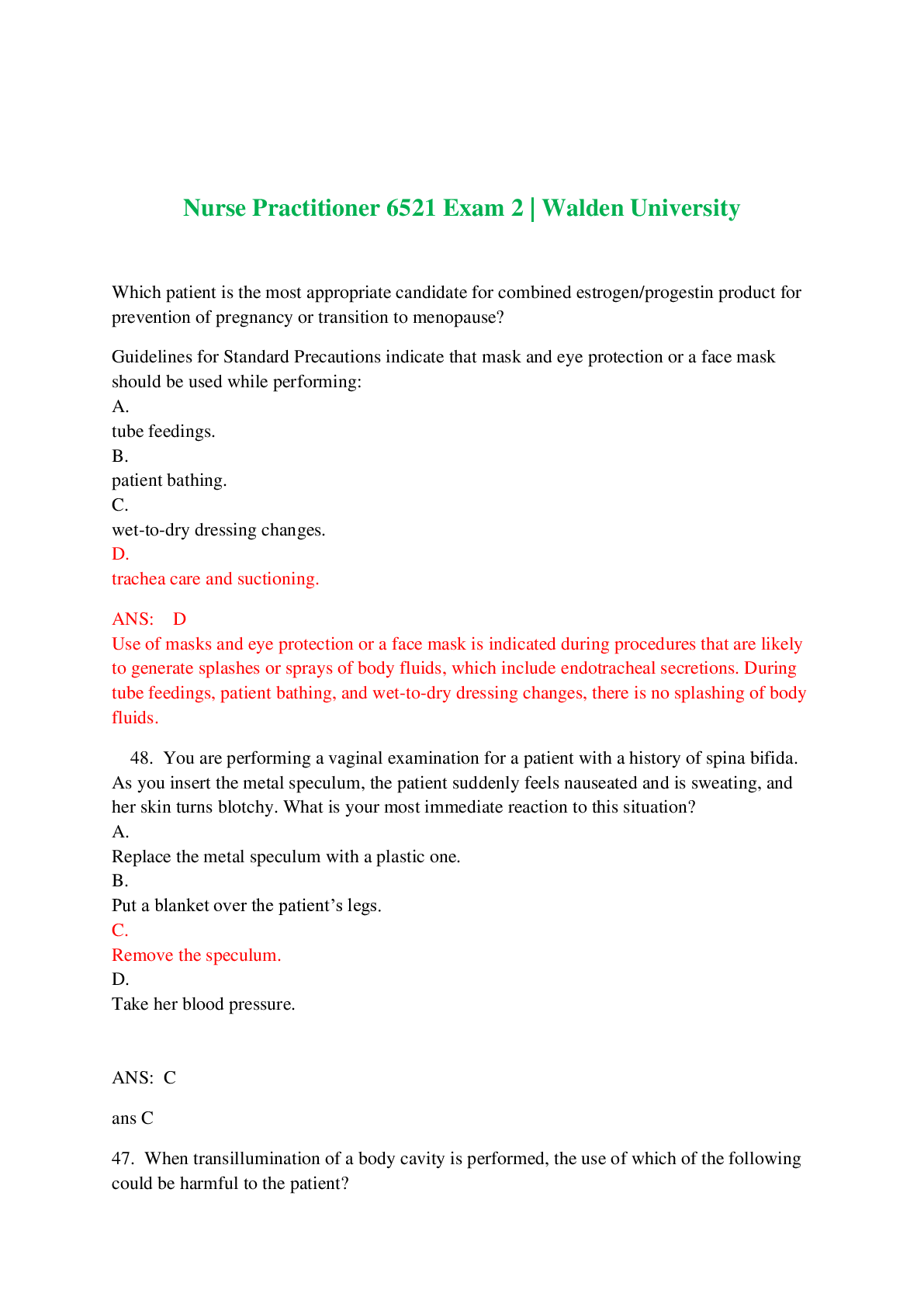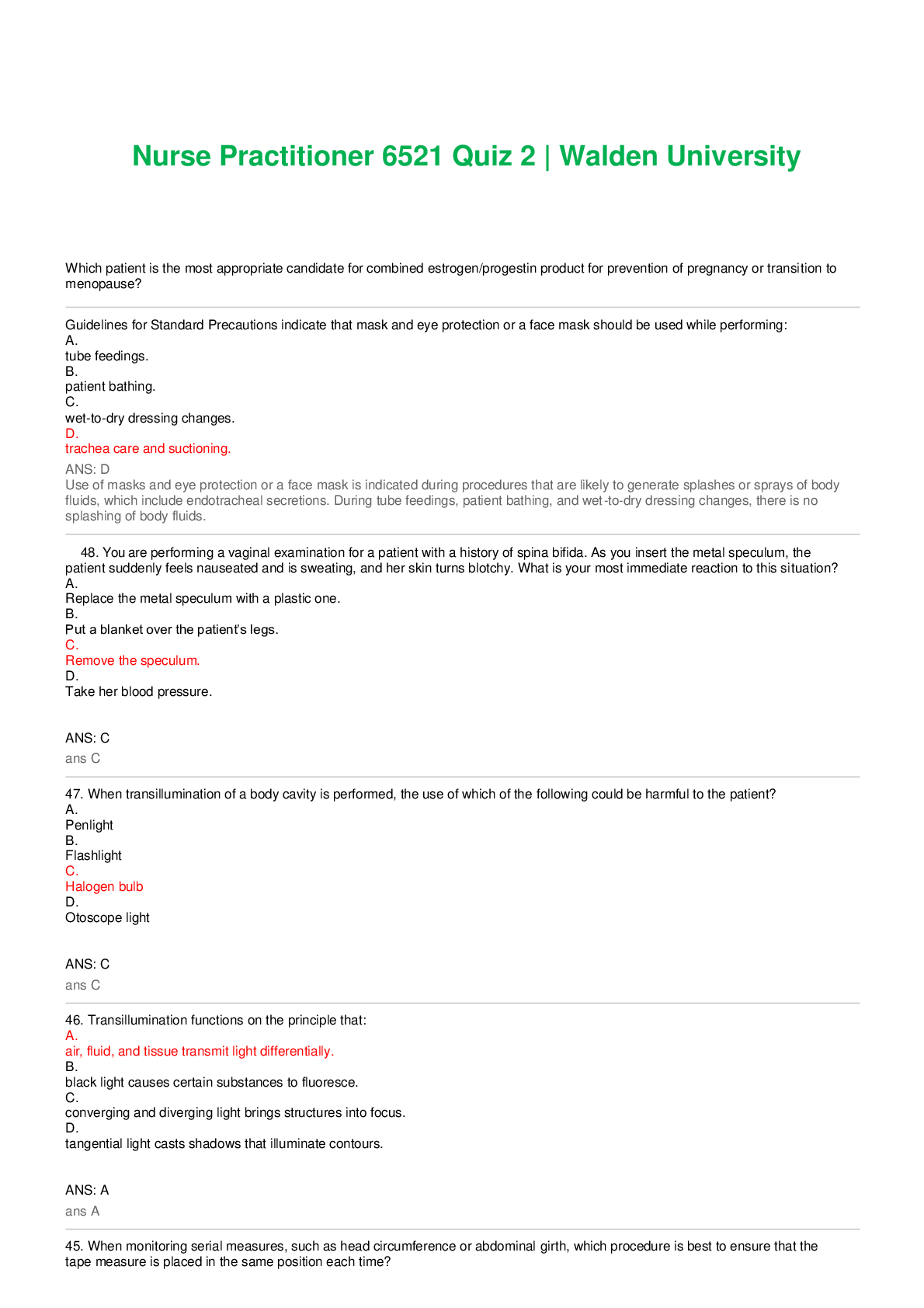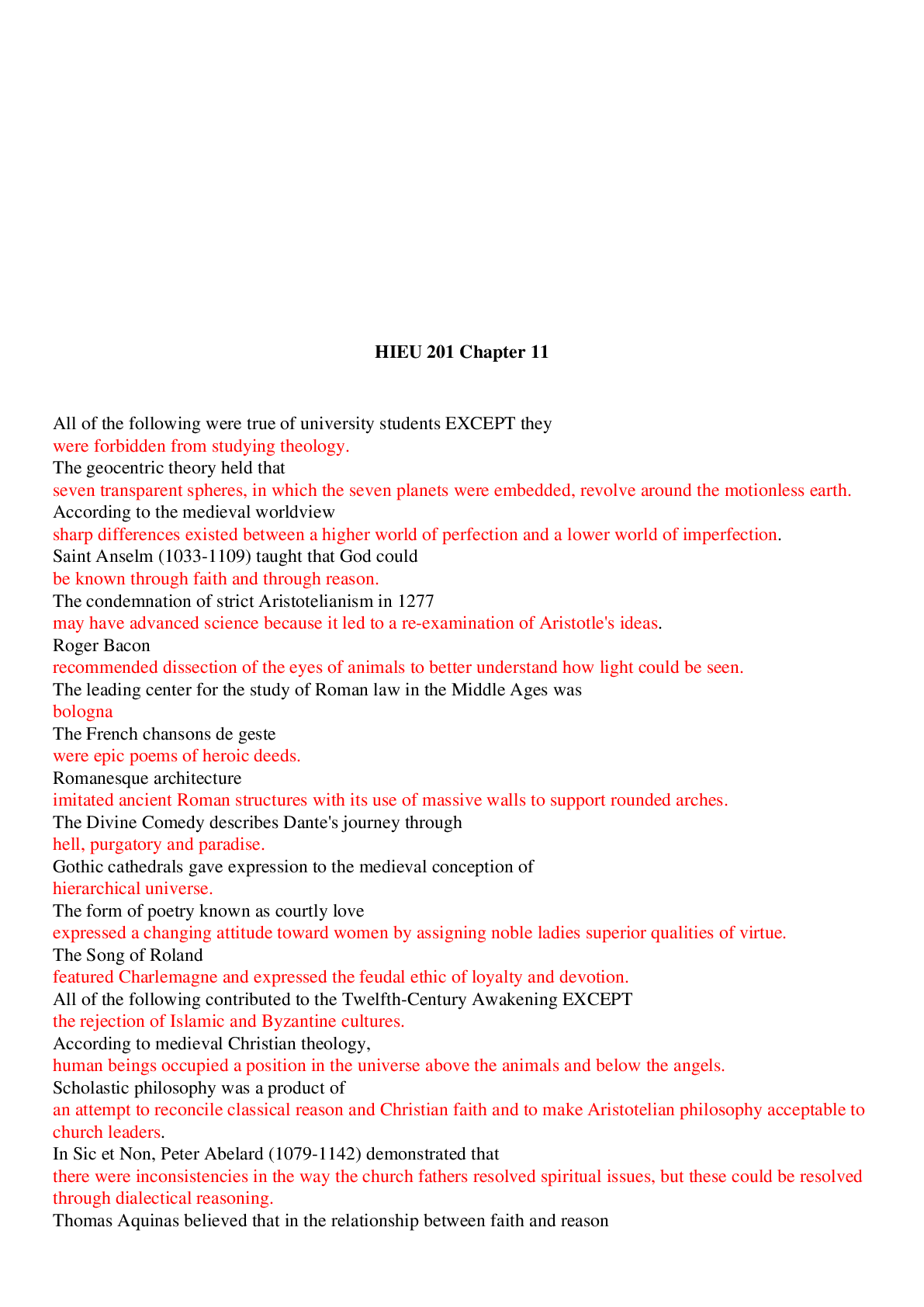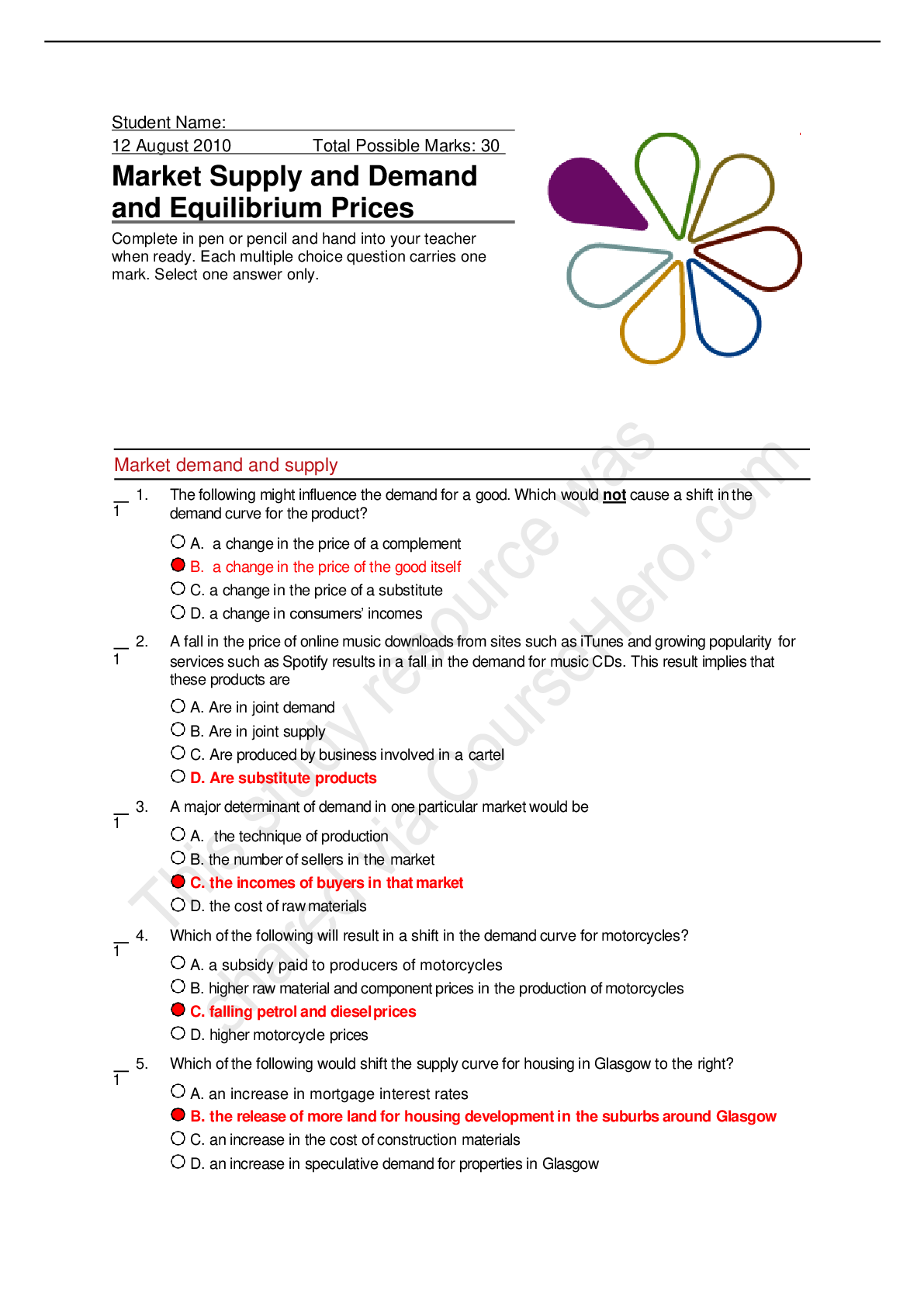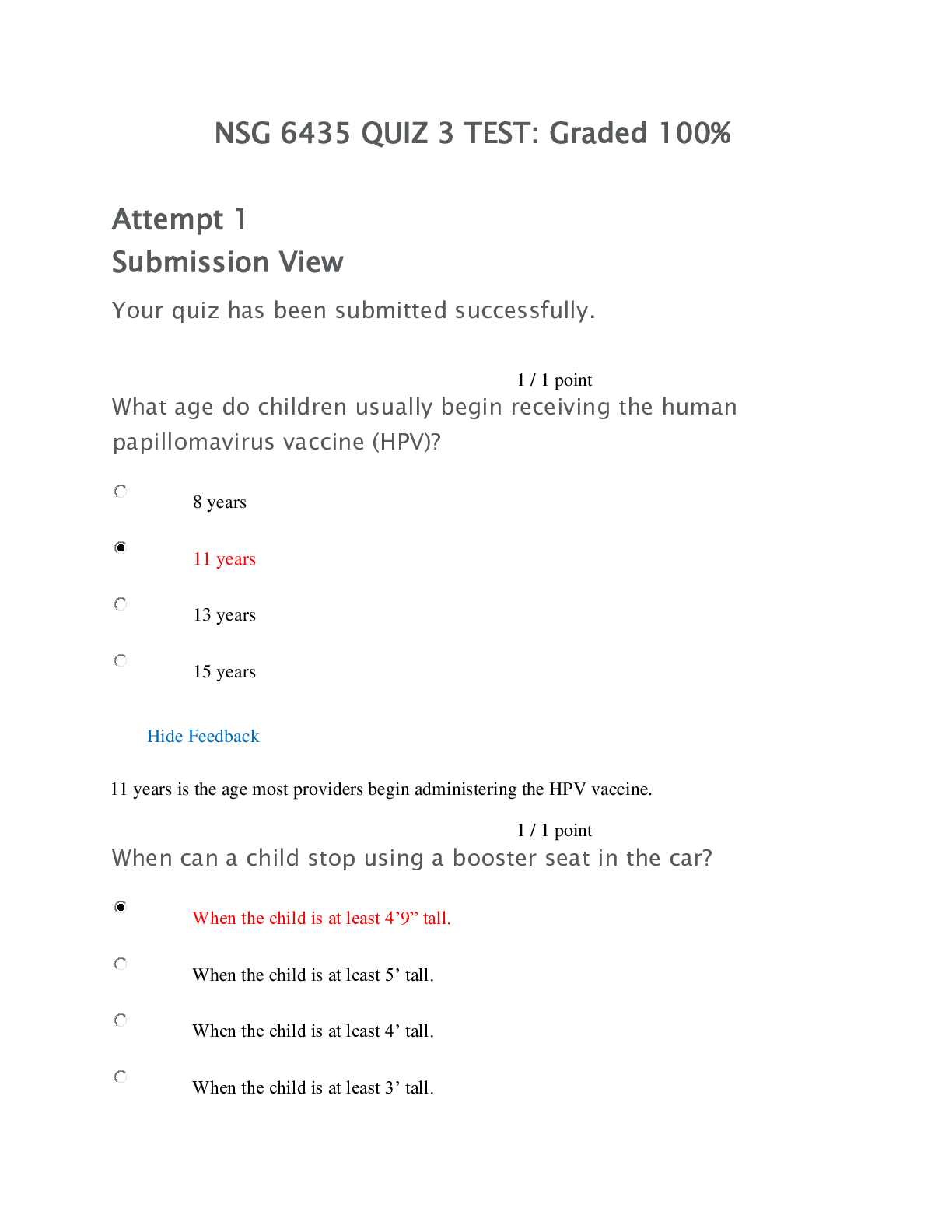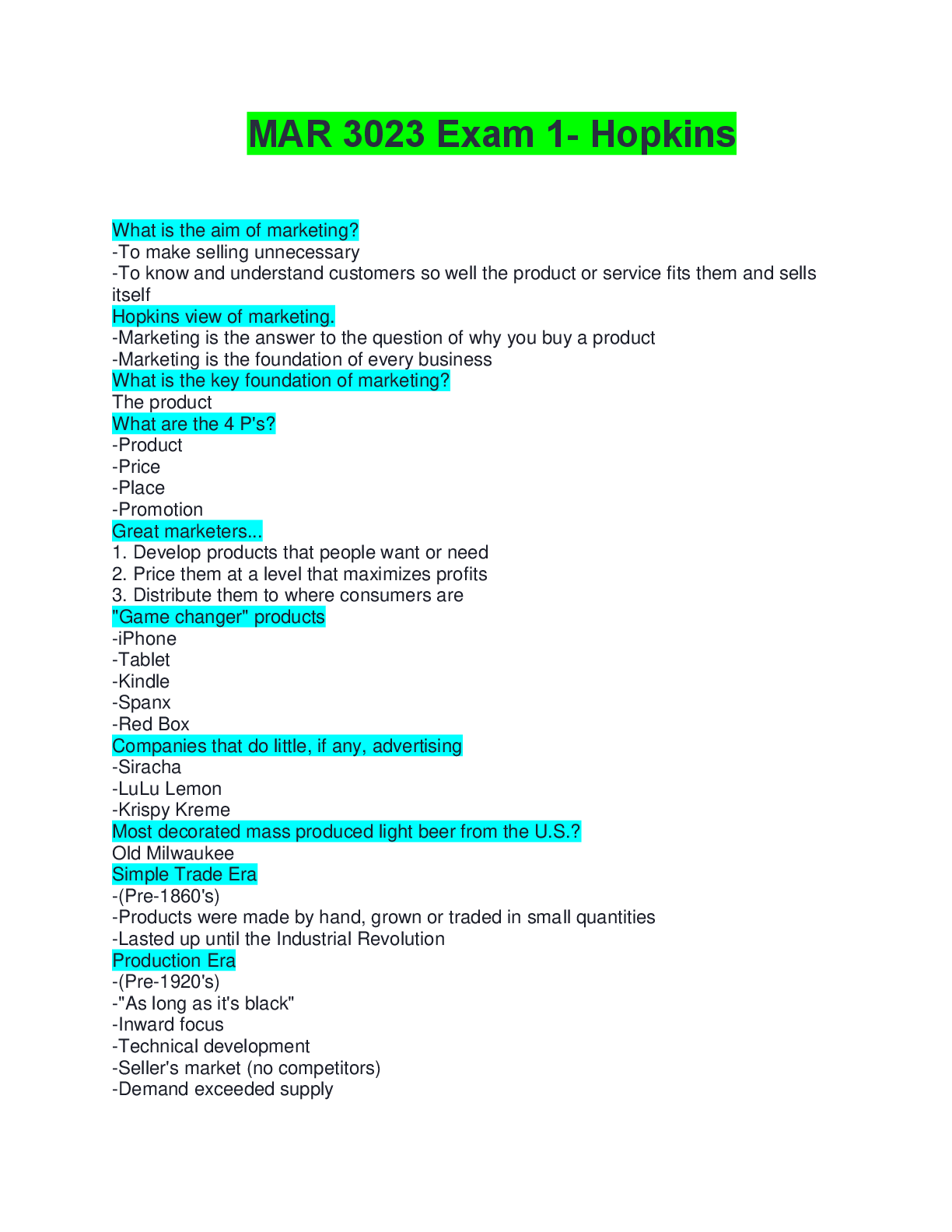Sophia - Human Biology - Unit 1 Challenge 3 Question And Answers_A+ Grade
Document Content and Description Below
Sophia - Human Biology - Unit 1 Challenge 3 1 — Proteins Identify the makeup of proteins. Three or more amino acids joined together form a __________. • a.) polypeptide chain • b.) protein ... • c.) nucleic acid • d.) peptide bond 2 — Lipids Understand the elements and behavior of lipids. What type of lipids would increase the chances of health disorders if consumed regularly through diet? • a.) Trans fat • b.) Triglyceride • c.) Sterol • d.) Phospholipid 3 — Nucleic Acids Identify the elements of nucleic acids. Which of the following is present only in DNA? • a.) Thymine • b.) Adenine • c.) Cytosine • d.) Guanine 4 — Carbohydrates Understand the elements of carbohydrates and their role in the cell. Which of the following is true of an oligosaccharide? • a.) It has no sugar units. • b.) It has two or more sugar units. • c.) It has one sugar unit. • d.) It has exactly two sugar units. 5 — Metabolism Determine different types of metabolism and the roles they play. What is it called when larger molecules are broken down into smaller ones? • a.) Cellular respiration • b.) ATP production • c.) Anabolism • d.) Catabolism 6 — ATP Production Overview Identify the basics of ATP production. The process by which molecules are converted into energy is called __________. • a.) glycolysis • b.) cellular respiration • c.) the Krebs cycle • d.) metabolism 7 — Glycolysis Determine the process of glycolysis. Which of the following statements is true? • a.) Glycolysis occurs within the cytoplasm. • b.) Glycolysis does not produce any ATP. • c.) Glycolysis requires oxygen to occur. • d.) Glycolysis is the second phase of cellular respiration. 8 — Krebs Cycle Understand the Krebs cycle. How many molecules of ATP are produced during the Krebs cycle? • a.) Two • b.) Four • c.) Six • d.) Zero 9 — Electron Transport Chain Understand the Electron Transport Chain. The electron transport chain receives products from which other process(es)? • a.) Glycolysis and the Krebs cycle • b.) Glycolysis only • c.) The Krebs cycle only • d.) Homeostasis 10 — Enzymes Identify the structure and function of enzymes. Which of the following statements about enzymes is true? • a.) Salivary amylase is an enzyme made up of lipids. • b.) The active site is the same shape for every enzyme in your body. • c.) Enzymes produce a product that is changed physically but remains the same chemically. • d.) The substance remaining after a reaction carried out by an enzyme is called the product. [Show More]
Last updated: 3 years ago
Preview 1 out of 3 pages

Buy this document to get the full access instantly
Instant Download Access after purchase
Buy NowInstant download
We Accept:

Reviews( 0 )
$10.00
Can't find what you want? Try our AI powered Search
Document information
Connected school, study & course
About the document
Uploaded On
Aug 19, 2020
Number of pages
3
Written in
All
Additional information
This document has been written for:
Uploaded
Aug 19, 2020
Downloads
0
Views
221

